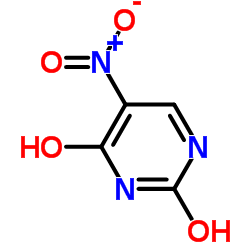The significance of 3H-thymidine degradation in cell culture experiments with special reference to rheumatoid arthritis.
P J Nykänen, P V Raunio, P U Kankaanpää
Index: APMIS 96(9) , 768-72, (1988)
Full Text: HTML
Abstract
The degradation of 3H-thymidine under various cell culture conditions was analysed. It was found that a half of 3H-thymidine was degraded to 3H-thymine during 24 hours in PHA stimulation of blood lymphocytes. A control culture in which PHA was not added also caused 3H-thymidine degradation. 3H-thymidine degradation was prevented by adding 5-nitrouracil to the incubation medium at a concentration of 0.577 mg/ml. At the same time 5-NU increased 3H-thymidine incorporation into lymphocytes by 47%. 5-NU also eliminated the inhibitory effect of rheumatoid arthritis synovial tissue eluate on PHA stimulation. In addition 5-NU and nonradioactive thymine increased the 3H-thymidine labelling index of fresh rheumatoid arthritis synovial membrane biopsies, and also more of the isotope was accumulated in the individual cells of the membrane. These studies demonstrate that 3H-thymidine degradation is an important phenomenon in cell cultures and that it can be prevented effectively by using 5-nitrouracil with 3H-thymidine.
Related Compounds
| Structure | Name/CAS No. | Molecular Formula | Articles |
|---|---|---|---|
 |
2,4-Dihydroxy-5-nitropyrimidine
CAS:611-08-5 |
C4H3N3O4 |
|
Phenobarbital induction and chemical synergism demonstrate t...
2014-12-01 [Antimicrob. Agents Chemother. 58(12) , 7475-83, (2014)] |
|
Inhibition of UDP-glucuronyltransferase activity in rat live...
1995-11-01 [Comp. Biochem. Physiol. C, Pharmacol. Toxicol. Endocrinol. 112(3) , 321-5, (1995)] |
|
Thymidine phosphorylase inhibitors with a homophthalimide sk...
2001-07-01 [Biol. Pharm. Bull. 24(7) , 860-2, (2001)] |
|
[Conformational analysis of 5-substituted uracil].
1989-01-01 [Biofizika 34(5) , 753-7, (1989)] |
|
Catabolism of 5-fluoro-2'-deoxyuridine by isolated rat intes...
1988-12-01 [Proc. Soc. Exp. Biol. Med. 189(3) , 353-61, (1988)] |